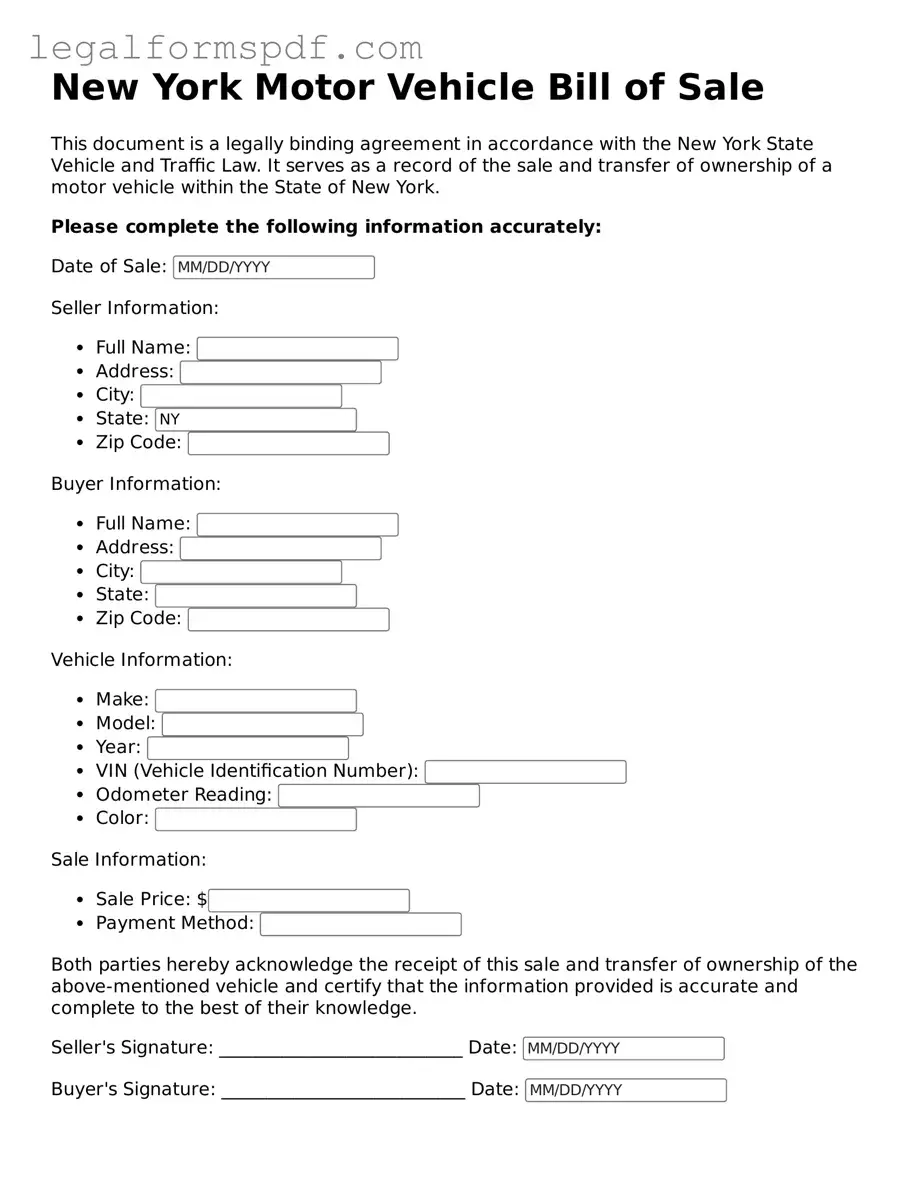Filling out the New York Motor Vehicle Bill of Sale form can seem straightforward, but errors can easily occur if one is not careful. A common mistake is neglecting to check for accuracy in the vehicle's identification details. This includes the make, model, year, and VIN (Vehicle Identification Number). Accurate information is crucial for the document's legality and for future reference if disputes or issues regarding the vehicle's history arise.
Another frequent oversight is failing to correctly state the sale price of the vehicle. It's essential to ensure that the amount listed matches what was agreed upon. An incorrect sale price can lead to problems with tax assessments and could also raise questions about the legitimacy of the sale. Additionally, some people mistakenly leave out the sale date, which is vital for establishing when the ownership officially changed hands.
A critical aspect that is often overlooked is the requirement for both the seller and the buyer to sign the document. Without the signatures of both parties, the bill of sale may not be considered valid. It serves as a legal agreement and proof of the transaction, and therefore both parties’ acknowledgments are required.
Omitting any existing liens or encumbrances on the vehicle is also a mistake to avoid. Such information must be disclosed to the buyer, as liens could significantly affect the buyer’s ability to obtain a clear title. Clear communication about the vehicle’s financial obligations is necessary for a transparent and honest transaction.
Some individuals also forget to provide a thorough description of the vehicle. Besides the basic identification details, any additional features or significant damages should be noted. This full disclosure helps in preventing any future claims of misrepresentation and ensures that the buyer is fully aware of what they are purchasing.
Not including a clause about the vehicle being sold "as is" or with a warranty is another oversight. This statement clarifies the condition under which the vehicle is sold and the extent of the seller's liability. Without this clause, the seller may inadvertently imply a warranty that wasn't intended.
Many people also disregard the requirement to have the document notarized, depending on local laws. While not always necessary, getting the bill of sale notarized can add an extra layer of legal protection and authenticity to the document. It's always advisable to check if notarization is required in your jurisdiction.
Forgetting to provide copies of the bill of sale to all parties involved is yet another common mistake. Each party should receive a copy for their records. This ensures that everyone has proof of the transaction and can easily reference the document if needed.
Incorrectly filling out the buyer and seller information, including names and addresses, is a simple yet impactful error. This information must be precisely as it appears on official identification to avoid issues in the registration and legal ownership transfer process.
Last but not least, not checking the form for completeness and accuracy before finalizing is a crucial miss. Taking the time to review the document can prevent many of the aforementioned mistakes. Ensuring that all fields are correctly filled and that the information is accurate protects all parties involved in the transaction.
